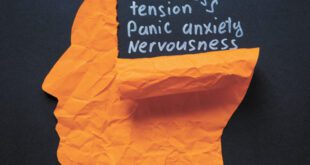By Cedric Tankson, MD – Orthopaedic Surgeon
 As National Pickleball Month arrives, courts across America are filling with enthusiasts embracing the nation’s fastest-growing sport. With its accessible learning curve and social appeal, pickleball has captured the hearts of millions—from retirees to young athletes looking for a new challenge. However, this surge in popularity has brought a corresponding rise in sport-specific injuries, particularly to the foot and ankle.
As National Pickleball Month arrives, courts across America are filling with enthusiasts embracing the nation’s fastest-growing sport. With its accessible learning curve and social appeal, pickleball has captured the hearts of millions—from retirees to young athletes looking for a new challenge. However, this surge in popularity has brought a corresponding rise in sport-specific injuries, particularly to the foot and ankle.
The Pickleball Phenomenon
Pickleball’s meteoric rise is no accident. The sport combines elements of tennis, badminton, and table tennis, played on a smaller court with a plastic ball and paddle. Its appeal spans generations, with over 4.8 million players nationwide enjoying its blend of strategy, skill, and social connection.
“What makes pickleball unique is its accessibility for all ages and fitness levels,” explains Dr. Cedric Tankson, Orthopaedic Surgeon at UF Health Orthopaedics. “However, this accessibility sometimes leads players to underestimate the physical demands and proper preparation required.”
Common Foot and Ankle Injuries in Pickleball
The quick starts, stops, and lateral movements characteristic of pickleball create particular stress on the lower extremities. According to UF Health Sports Medicine data, the most common pickleball-related foot and ankle injuries include:
. Achilles tendinitis: Repetitive strain on the tendon connecting the calf muscles to the heel
. Plantar fasciitis: Inflammation of the thick band of tissue running across the bottom of the foot
. Ankle sprains: Stretching or tearing of the ligaments, often from quick directional changes
. Stress fractures: Tiny cracks in bones from repetitive force, particularly in the metatarsals
“Many players don’t realize that pickleball, despite its friendly appearance, involves movements that can put significant stress on the foot and ankle complex,” notes Dr. Tankson. “The sport’s frequent direction changes and quick pivots challenge stability and strength in ways newcomers might not anticipate.”
Prevention Strategies for Foot and Ankle Injuries
UF Health Sports Medicine specialists recommend several strategies to maintain foot and ankle health while enjoying pickleball:
1. Proper Footwear Selection
“Court-specific shoes are essential,” emphasizes Dr. Thompson. “Unlike running shoes designed for forward motion, court shoes provide lateral support and appropriate traction for multi-directional movements.”
Look for shoes with:
. Good lateral support
. Cushioning for impact absorption
. Non-marking soles designed for court surfaces
. Proper fit with adequate toe room
2. Progressive Training and Conditioning
“Many pickleball injuries occur when players jump into competitive play without building foundational strength and flexibility,” says Dr. Thompson.
A balanced conditioning program should include:
. Ankle strengthening exercises
. Balance and proprioception training
. Flexibility work, especially for the Achilles tendon and calf muscles
. Core stability exercises to improve overall movement efficiency
3. Proper Warm-Up and Cool-Down Routines
Before hitting the court, spend 5-10 minutes on dynamic warm-ups like ankle circles, heel walks, and gentle side-to-side movements. After play, static stretching helps maintain flexibility and aids recovery.
4. Playing Surface Awareness
“Different court surfaces present unique challenges to foot and ankle stability,” Dr. Thompson explains. “Players should adjust their movement patterns accordingly and be particularly cautious on slippery or uneven surfaces.”
When to Seek Medical Attention
While minor soreness is normal after activity, certain symptoms warrant professional evaluation:
. Pain that persists more than a few days
. Swelling that doesn’t improve with rest and ice
. Inability to bear weight
. Visible deformity or bruising
. Recurring pain that interferes with daily activities
The Benefits Beyond the Court
Despite potential injury risks, the benefits of pickleball far outweigh the concerns when played with proper preparation.
“Regular pickleball play improves cardiovascular health, enhances balance and coordination, strengthens lower body muscles, and provides valuable social connections,” says Dr. Tankson. “These benefits contribute significantly to overall health and quality of life, particularly as we age.”
As National Pickleball Month celebrates this increasingly popular sport, UF Health Orthopaedics reminds enthusiasts that with proper preparation, equipment, and awareness, players can enjoy the game while minimizing injury risk. By following these guidelines, pickleball can remain a source of fitness, fun, and friendship for years to come.
About Cedric Tankson, MD
Cedric J. Tankson, M.D., earned his medical degree from The University of South Florida College of Medicine in Tampa, Florida. He completed his orthopaedic residency training at Louisiana State University in New Orleans and completed a foot and ankle fellowship at The Institute for Foot and Ankle Reconstruction at Mercy Medical Center in Baltimore, Maryland.
Dr. Tankson joined the UF Health-Villages orthopaedics staff in January 2020 and is board certified by the American Board of Orthopaedic Surgery. His clinical area of interests include arthritis, fracture management, joint restoration, sporting injuries and tendinitis
Dr. Tankson has been published in several publications and has experience researching many topics including foot and ankle disorders, pediatric acute hematogenous osteomyelitis, cubital tunnel syndrome and infectious diseases.
352.323.5665
CentralFlorida.UFHealth.org/Orthopaedic-Surgery/
 Central Florida Health and Wellness Magazine Health and Wellness Articles of the Villages
Central Florida Health and Wellness Magazine Health and Wellness Articles of the Villages


